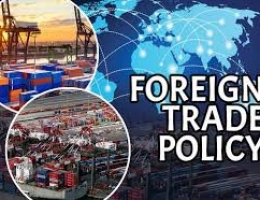
India’s Trade Strategy 2025: Balancing Protectionism, Resilience, and Global Leadership
As the world navigates rising protectionism, supply chain disruptions, and evolving geopolitical dynamics, India stands at a critical juncture. Its trade strategy in 2025 reflects a dual approach—balancing exceptionalism in global trade leadership with exceptional policies tailored to its unique economic realities. This strategic blend is shaping India’s efforts to expand market access, boost domestic manufacturing, and establish itself as a key player in the redefined global order.
Adapting to Global Fragmentation: India’s Distinctive Trade Strategy
Amid growing economic fragmentation, India has crafted a trade policy that focuses on resilience and strategic expansion. Instead of fully embracing free trade like Western economies or adopting China’s state-controlled model, India follows a selective liberalization approach—opening certain sectors while safeguarding key domestic industries.
Key elements of this strategy include:
- Regional Trade Focus Over Globalization: India is intensifying its trade partnerships across South Asia, the Middle East, and Africa, strengthening regional trade agreements to reduce dependency on volatile global markets. Initiatives such as the India-UAE Comprehensive Economic Partnership Agreement (CEPA) and enhanced engagement with ASEAN exemplify this approach.
- Atmanirbhar Bharat as a Catalyst: Self-reliance does not equate to isolationism. Through Production-Linked Incentive (PLI) schemes and an export-driven approach, India is emerging as a global manufacturing hub while reducing its reliance on China. Key industries such as electronics, pharmaceuticals, and green energy are witnessing increased investments, with global players expanding their operations in India.
- Realigning Supply Chains: India's trade policies are now focused on friend-shoring and near-shoring, particularly with Japan, Australia, and the EU, to mitigate supply chain risks. This shift aligns with global efforts to diversify production away from China, making India a more attractive alternative.
India’s Leadership in Global Trade
India’s trade strategy also highlights its ambition to play a leading role in global economic governance:
- Championing the Global South: India has positioned itself as a strong advocate for fairer trade policies, actively pushing for World Trade Organization (WTO) reforms that benefit developing economies. It continues to lead efforts on food security, climate finance, and equitable trade practices, setting itself apart from both Western and Chinese trade models.
- Advancing Digital and Green Trade: India is playing a pivotal role in shaping the global digital trade and sustainability agenda. Initiatives like ONDC (Open Network for Digital Commerce) are redefining digital commerce, while its leadership in green hydrogen and renewable energy is fostering sustainable trade partnerships worldwide.
India’s trade strategy in 2025 strikes a careful balance between protectionism and openness, resilience and expansion, leadership and cooperation. By implementing exceptional policies that align with its economic priorities while advocating for a more inclusive global trade system, India is charting a distinct path—one that reinforces its economic sovereignty while establishing it as a key driver of global trade transformation.











